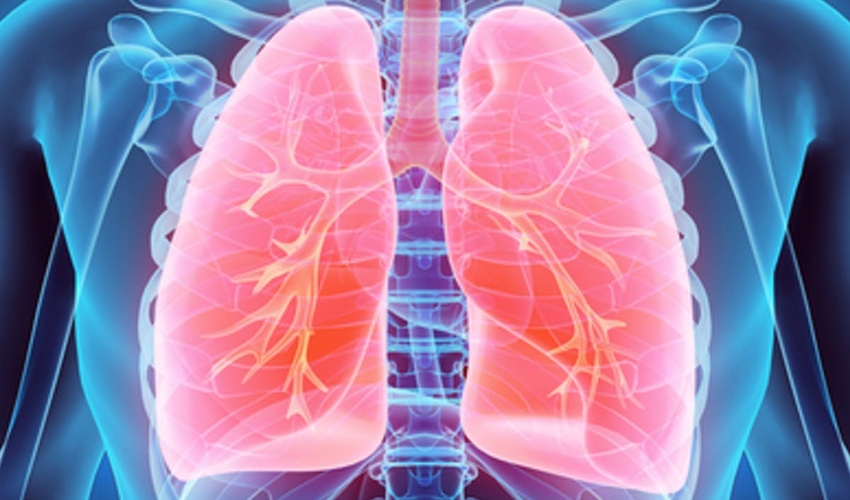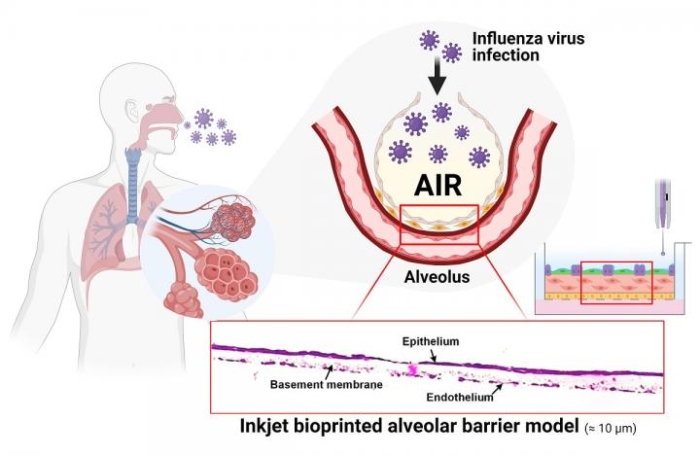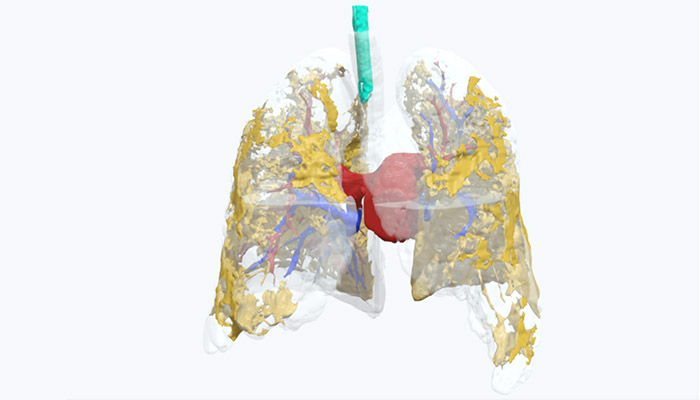POSTECH 3D Print First-of-its-Kind Lung Model

As winter gives way to spring the newly bloomed flowers and warm weather bring with them dust, unperceived by most but an anguish to those suffering from respiratory diseases. For them, this year and last, tainted by Covid-19, has amplified the threat. The human lung possesses a complex structure and thinness which make it difficult to create an artificial lung model for experimental use, a practice which is indispensable when it comes to researching treatments, particularly those required for fragile body parts.
Together, Professor Sungjune Jung of the Department of Materials Science and Engineering, and Professor Joo-Yeon Yoo and Ph.D. candidate Dayoon Kang of the Department of Life Sciences at the Pohang University of Science & Technology (POSTECH) have succeeded in producing a three-dimensional lung model containing a variety of human alveolar cell lines using inkjet bioprinting. “We have been printing cells and fabricating tissues using the bioprinting method, but this is the first time in the world to simulate an alveolar barrier with a three-layer structure of about 10 μm thickness,” explained Professor Sungjune Jung of POSTECH. “It is also the first time an artificial alveolar barrier was infected with a virus and a physiological antiviral response was observed.”

Inkjet bioprinted alveolar barrier model. (Photo Credit: POSTECH)
Inkjet bioprinting technology permits the production of standardized and patient-customized tissues, as well as mass production. This in turn gives the technology potential to replace conventional methods of manufacturing test models. Using ‘drop-on-demand’ inkjet bioprinting, the research team were able to fabricate a three-layer alveolar barrier model with thickness of about 10 micrometers (μm) through high-resolution deposition of alveolar cells. The novel alveolar barrier model was capable of reproducing the physiological response at the actual tissue level in regard to viral infectivity and antiviral response. Using it as a influenza virus infection model, the researchers were also able to observe the the self-proliferation and antiviral response of the virus.
Professor Jung added, “The artificial tissue produced this time can be used as an early platform for evaluating efficacy of therapeutic drugs and vaccines countering infectious respiratory viruses – including the COVID-19 virus – as it enables mass production and quality control as well as fabrication of patient-customized disease models.” Another company called Axial3D recently completed a similar project using Formlab’s SLA 3D printing technology to replicate the lungs of a COVID-19 patient.

Axial3D’s model of a COVID-19 patient’s lung. (Photo Credit: Axial3D)
For more information about POSTECH’s 3D printed lung model you can read the full press release HERE.
What do you think about this 3D printed lung model? Let us know in a comment below or on our Facebook, Twitter and LinkedIn pages! Sign up for our free weekly Newsletter here, the latest 3D printing news straight to your inbox!
*Cover photo courtesy of: MDGRPHCS






